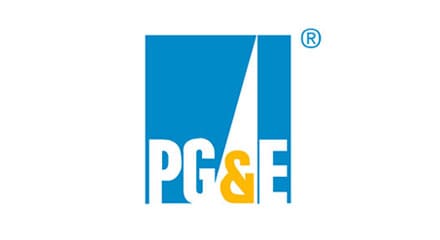FAQs Search All
About Our Program
(Poor Mans Crane Training) Step 1 Step 2 Step 3 Step 5 This may sound strange and you might look stupid doing it so don’t let anyone see you they might laugh at you. But it works. Yes! American Crane School does not set the standards we are simply the ones that get you to meet them. Once you are certified you have met the minimum requirement, however this does not mean that you are a super duper crane operator. Example of Grove 18 ton crane: Example of Larger 1,200 ton crane: This is a difficult question to answer. We have seen crane operators knock over a lot of things with fast times and pass. And we have seen crane operators not knock anything over but take too long and fail. There if a balance. The best thing to do is stay within the time limits (try not to knock anything over.) If the load starts to go into a circular motion stop one movement at a time first the side to side motion, second it will only swing in and out, than you can stop the back and fourth motion by lowering and raising the boom. Most candidates just want to practice playing with the practical exam test course or putting the headache ball into the barrels. This could help you if you have already mastered the 5-gallon bucket of water trick. But if you haven’t learned how to control the load this is a waste of time. Step 1 Step 2 Step 3 Step 4 Step 5 Step 6 Again like in task 1 and 3 you must know how to control the load. There are point deductions for everything you knock over, if the load touches the ground, if the 3′ chain attached to the bottom of the test weight leaves the ground, and if you go over your optimum time, Hint 1 Hint 2 Hint 3 If you loose control of the load: Stop do not immediately react or you might just make it worse. This will ensure crane safety and successful completion of your crane practical examination. (optimum time 3:00 each way swing cab telescopic boom crane) First you must know how to control the headache ball (overhaul ball). Swing from the start circle to the stop circle, when you have the headache ball under control, don’t stop and stare at it, drop it down in the circle without letting the headache ball (overhaul ball) and chain make any contact with the test course, and without letting the hook make contact with the ground. Keep in mind, the clock is ticking. Hint 1 Hint 2 (optimum time 1:30) Like in task 1, you must know how to control the headache ball (overhaul ball). Swing from the start circle to barrel number 1 (when you have the headache ball under control, don’t stop and stare at it, drop it down into the barrel where the white stripe on the ball goes below the rim of the barrel without knocking the barrel over or moving the barrel more than 2″ (it is ok if the hook or headache ball make contact with the barrel) than when you are given the signal, proceed to barrel number 2 and do the same thing your time will stop when the headache ball is removed from barrel number 2… Hint 1 Hint 2 (optimum time 3:30) Since most of the practical exams require that a crane boom lengths be set to 70% – 75% for testing, we use the smallest cranes possible to meet the requirement. It makes the test easier. All of our cranes are Cal-OSHA certified and are used only for practical testing. You should familiarize with all of the crane hand signals but the ones that will be the most important for the practical exam are: (this task is not timed)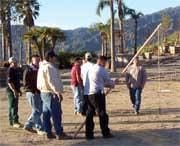
Get a pole approximately 8’ long
Tie a string approximately 4’ long to the end of the pole
Tie a heavy nut or bolt at the end of the string.
Put the end of the pole on the ground and practice swinging it around until you learn the concept of how a crane operates and controlling the load.
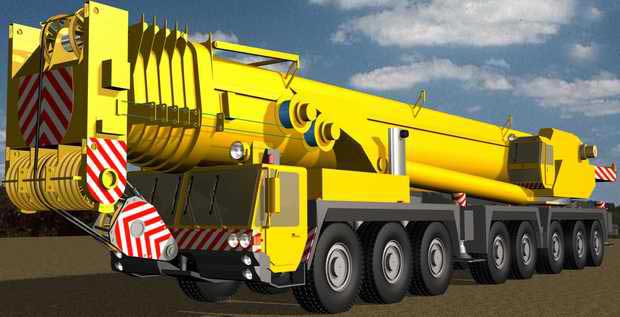
For fastest results this is it:
Get a 5-gallon bucket
Hang the bucket on the hook (the crane should be reeved with a single part line)
Fill the bucket almost to the top with water.
Practice swinging the crane left and right until you can use half throttle and the swing function or lever is fully engaged. Than bring it to a complete stop without spilling the water or setting it on the down.
Practice lowering and raising the boom until you can use half throttle and the swing function or lever is fully engaged. Than bring it to a complete stop without spilling the water or setting it on the down.
Combine step 4 and 5 until you can use both of the functions simultaneously without spilling the water.
If you are not an experienced crane operator ar you are not familiar with the crane don’t show everyone how cool you are using all of the cranes functions at the same time. Use 1 function at a time but don’t let the load stand still, keep the load under control and moving through the course. There is plenty of time if you can control the load and this 1 function at a time method is used. (This will ensure that because you might be nervous you do not grab for the wrong function)
When you are on the way out of the course on task 4B do not get nervous at the end. Many times crane operators get nervous at the very end of the crane practical exam test course and mess up what could have otherwise been a good run.
Its understandable that you are nervous.
Think
Act
(optimum time 4:00 each way fixed cab telescopic boom crane)
When practicing try to remember the boom angle of where the stop circle was located.
Keep in mind, the clock is ticking.
when practicing try to remember the boom angle of where the barrels were located.
Keep in mind, the clock is ticking.
Eligibility
(Poor Mans Crane Training) Step 1 Step 2 Step 3 Step 5 This may sound strange and you might look stupid doing it so don’t let anyone see you they might laugh at you. But it works. Yes! American Crane School does not set the standards we are simply the ones that get you to meet them. Once you are certified you have met the minimum requirement, however this does not mean that you are a super duper crane operator. Example of Grove 18 ton crane: Example of Larger 1,200 ton crane: This is a difficult question to answer. We have seen crane operators knock over a lot of things with fast times and pass. And we have seen crane operators not knock anything over but take too long and fail. There if a balance. The best thing to do is stay within the time limits (try not to knock anything over.) If the load starts to go into a circular motion stop one movement at a time first the side to side motion, second it will only swing in and out, than you can stop the back and fourth motion by lowering and raising the boom. Most candidates just want to practice playing with the practical exam test course or putting the headache ball into the barrels. This could help you if you have already mastered the 5-gallon bucket of water trick. But if you haven’t learned how to control the load this is a waste of time. Step 1 Step 2 Step 3 Step 4 Step 5 Step 6 Again like in task 1 and 3 you must know how to control the load. There are point deductions for everything you knock over, if the load touches the ground, if the 3′ chain attached to the bottom of the test weight leaves the ground, and if you go over your optimum time, Hint 1 Hint 2 Hint 3 If you loose control of the load: Stop do not immediately react or you might just make it worse. This will ensure crane safety and successful completion of your crane practical examination. (optimum time 3:00 each way swing cab telescopic boom crane) First you must know how to control the headache ball (overhaul ball). Swing from the start circle to the stop circle, when you have the headache ball under control, don’t stop and stare at it, drop it down in the circle without letting the headache ball (overhaul ball) and chain make any contact with the test course, and without letting the hook make contact with the ground. Keep in mind, the clock is ticking. Hint 1 Hint 2 (optimum time 1:30) Like in task 1, you must know how to control the headache ball (overhaul ball). Swing from the start circle to barrel number 1 (when you have the headache ball under control, don’t stop and stare at it, drop it down into the barrel where the white stripe on the ball goes below the rim of the barrel without knocking the barrel over or moving the barrel more than 2″ (it is ok if the hook or headache ball make contact with the barrel) than when you are given the signal, proceed to barrel number 2 and do the same thing your time will stop when the headache ball is removed from barrel number 2… Hint 1 Hint 2 (optimum time 3:30) Since most of the practical exams require that a crane boom lengths be set to 70% – 75% for testing, we use the smallest cranes possible to meet the requirement. It makes the test easier. All of our cranes are Cal-OSHA certified and are used only for practical testing. You should familiarize with all of the crane hand signals but the ones that will be the most important for the practical exam are: (this task is not timed)
Get a pole approximately 8’ long
Tie a string approximately 4’ long to the end of the pole
Tie a heavy nut or bolt at the end of the string.
Put the end of the pole on the ground and practice swinging it around until you learn the concept of how a crane operates and controlling the load.

For fastest results this is it:
Get a 5-gallon bucket
Hang the bucket on the hook (the crane should be reeved with a single part line)
Fill the bucket almost to the top with water.
Practice swinging the crane left and right until you can use half throttle and the swing function or lever is fully engaged. Than bring it to a complete stop without spilling the water or setting it on the down.
Practice lowering and raising the boom until you can use half throttle and the swing function or lever is fully engaged. Than bring it to a complete stop without spilling the water or setting it on the down.
Combine step 4 and 5 until you can use both of the functions simultaneously without spilling the water.
If you are not an experienced crane operator ar you are not familiar with the crane don’t show everyone how cool you are using all of the cranes functions at the same time. Use 1 function at a time but don’t let the load stand still, keep the load under control and moving through the course. There is plenty of time if you can control the load and this 1 function at a time method is used. (This will ensure that because you might be nervous you do not grab for the wrong function)
When you are on the way out of the course on task 4B do not get nervous at the end. Many times crane operators get nervous at the very end of the crane practical exam test course and mess up what could have otherwise been a good run.
Its understandable that you are nervous.
Think
Act
(optimum time 4:00 each way fixed cab telescopic boom crane)
When practicing try to remember the boom angle of where the stop circle was located.
Keep in mind, the clock is ticking.
when practicing try to remember the boom angle of where the barrels were located.
Keep in mind, the clock is ticking.
Signing Up
(Poor Mans Crane Training) Step 1 Step 2 Step 3 Step 5 This may sound strange and you might look stupid doing it so don’t let anyone see you they might laugh at you. But it works. Yes! American Crane School does not set the standards we are simply the ones that get you to meet them. Once you are certified you have met the minimum requirement, however this does not mean that you are a super duper crane operator. Example of Grove 18 ton crane: Example of Larger 1,200 ton crane: This is a difficult question to answer. We have seen crane operators knock over a lot of things with fast times and pass. And we have seen crane operators not knock anything over but take too long and fail. There if a balance. The best thing to do is stay within the time limits (try not to knock anything over.) If the load starts to go into a circular motion stop one movement at a time first the side to side motion, second it will only swing in and out, than you can stop the back and fourth motion by lowering and raising the boom. Most candidates just want to practice playing with the practical exam test course or putting the headache ball into the barrels. This could help you if you have already mastered the 5-gallon bucket of water trick. But if you haven’t learned how to control the load this is a waste of time. Step 1 Step 2 Step 3 Step 4 Step 5 Step 6 Again like in task 1 and 3 you must know how to control the load. There are point deductions for everything you knock over, if the load touches the ground, if the 3′ chain attached to the bottom of the test weight leaves the ground, and if you go over your optimum time, Hint 1 Hint 2 Hint 3 If you loose control of the load: Stop do not immediately react or you might just make it worse. This will ensure crane safety and successful completion of your crane practical examination. (optimum time 3:00 each way swing cab telescopic boom crane) First you must know how to control the headache ball (overhaul ball). Swing from the start circle to the stop circle, when you have the headache ball under control, don’t stop and stare at it, drop it down in the circle without letting the headache ball (overhaul ball) and chain make any contact with the test course, and without letting the hook make contact with the ground. Keep in mind, the clock is ticking. Hint 1 Hint 2 (optimum time 1:30) Like in task 1, you must know how to control the headache ball (overhaul ball). Swing from the start circle to barrel number 1 (when you have the headache ball under control, don’t stop and stare at it, drop it down into the barrel where the white stripe on the ball goes below the rim of the barrel without knocking the barrel over or moving the barrel more than 2″ (it is ok if the hook or headache ball make contact with the barrel) than when you are given the signal, proceed to barrel number 2 and do the same thing your time will stop when the headache ball is removed from barrel number 2… Hint 1 Hint 2 (optimum time 3:30) Since most of the practical exams require that a crane boom lengths be set to 70% – 75% for testing, we use the smallest cranes possible to meet the requirement. It makes the test easier. All of our cranes are Cal-OSHA certified and are used only for practical testing. You should familiarize with all of the crane hand signals but the ones that will be the most important for the practical exam are: (this task is not timed)
Get a pole approximately 8’ long
Tie a string approximately 4’ long to the end of the pole
Tie a heavy nut or bolt at the end of the string.
Put the end of the pole on the ground and practice swinging it around until you learn the concept of how a crane operates and controlling the load.

For fastest results this is it:
Get a 5-gallon bucket
Hang the bucket on the hook (the crane should be reeved with a single part line)
Fill the bucket almost to the top with water.
Practice swinging the crane left and right until you can use half throttle and the swing function or lever is fully engaged. Than bring it to a complete stop without spilling the water or setting it on the down.
Practice lowering and raising the boom until you can use half throttle and the swing function or lever is fully engaged. Than bring it to a complete stop without spilling the water or setting it on the down.
Combine step 4 and 5 until you can use both of the functions simultaneously without spilling the water.
If you are not an experienced crane operator ar you are not familiar with the crane don’t show everyone how cool you are using all of the cranes functions at the same time. Use 1 function at a time but don’t let the load stand still, keep the load under control and moving through the course. There is plenty of time if you can control the load and this 1 function at a time method is used. (This will ensure that because you might be nervous you do not grab for the wrong function)
When you are on the way out of the course on task 4B do not get nervous at the end. Many times crane operators get nervous at the very end of the crane practical exam test course and mess up what could have otherwise been a good run.
Its understandable that you are nervous.
Think
Act
(optimum time 4:00 each way fixed cab telescopic boom crane)
When practicing try to remember the boom angle of where the stop circle was located.
Keep in mind, the clock is ticking.
when practicing try to remember the boom angle of where the barrels were located.
Keep in mind, the clock is ticking.
Payments & Billing
(Poor Mans Crane Training) Step 1 Step 2 Step 3 Step 5 This may sound strange and you might look stupid doing it so don’t let anyone see you they might laugh at you. But it works. Yes! American Crane School does not set the standards we are simply the ones that get you to meet them. Once you are certified you have met the minimum requirement, however this does not mean that you are a super duper crane operator. Example of Grove 18 ton crane: Example of Larger 1,200 ton crane: This is a difficult question to answer. We have seen crane operators knock over a lot of things with fast times and pass. And we have seen crane operators not knock anything over but take too long and fail. There if a balance. The best thing to do is stay within the time limits (try not to knock anything over.) If the load starts to go into a circular motion stop one movement at a time first the side to side motion, second it will only swing in and out, than you can stop the back and fourth motion by lowering and raising the boom. Most candidates just want to practice playing with the practical exam test course or putting the headache ball into the barrels. This could help you if you have already mastered the 5-gallon bucket of water trick. But if you haven’t learned how to control the load this is a waste of time. Step 1 Step 2 Step 3 Step 4 Step 5 Step 6 Again like in task 1 and 3 you must know how to control the load. There are point deductions for everything you knock over, if the load touches the ground, if the 3′ chain attached to the bottom of the test weight leaves the ground, and if you go over your optimum time, Hint 1 Hint 2 Hint 3 If you loose control of the load: Stop do not immediately react or you might just make it worse. This will ensure crane safety and successful completion of your crane practical examination. (optimum time 3:00 each way swing cab telescopic boom crane) First you must know how to control the headache ball (overhaul ball). Swing from the start circle to the stop circle, when you have the headache ball under control, don’t stop and stare at it, drop it down in the circle without letting the headache ball (overhaul ball) and chain make any contact with the test course, and without letting the hook make contact with the ground. Keep in mind, the clock is ticking. Hint 1 Hint 2 (optimum time 1:30) Like in task 1, you must know how to control the headache ball (overhaul ball). Swing from the start circle to barrel number 1 (when you have the headache ball under control, don’t stop and stare at it, drop it down into the barrel where the white stripe on the ball goes below the rim of the barrel without knocking the barrel over or moving the barrel more than 2″ (it is ok if the hook or headache ball make contact with the barrel) than when you are given the signal, proceed to barrel number 2 and do the same thing your time will stop when the headache ball is removed from barrel number 2… Hint 1 Hint 2 (optimum time 3:30) Since most of the practical exams require that a crane boom lengths be set to 70% – 75% for testing, we use the smallest cranes possible to meet the requirement. It makes the test easier. All of our cranes are Cal-OSHA certified and are used only for practical testing. You should familiarize with all of the crane hand signals but the ones that will be the most important for the practical exam are: (this task is not timed)
Get a pole approximately 8’ long
Tie a string approximately 4’ long to the end of the pole
Tie a heavy nut or bolt at the end of the string.
Put the end of the pole on the ground and practice swinging it around until you learn the concept of how a crane operates and controlling the load.

For fastest results this is it:
Get a 5-gallon bucket
Hang the bucket on the hook (the crane should be reeved with a single part line)
Fill the bucket almost to the top with water.
Practice swinging the crane left and right until you can use half throttle and the swing function or lever is fully engaged. Than bring it to a complete stop without spilling the water or setting it on the down.
Practice lowering and raising the boom until you can use half throttle and the swing function or lever is fully engaged. Than bring it to a complete stop without spilling the water or setting it on the down.
Combine step 4 and 5 until you can use both of the functions simultaneously without spilling the water.
If you are not an experienced crane operator ar you are not familiar with the crane don’t show everyone how cool you are using all of the cranes functions at the same time. Use 1 function at a time but don’t let the load stand still, keep the load under control and moving through the course. There is plenty of time if you can control the load and this 1 function at a time method is used. (This will ensure that because you might be nervous you do not grab for the wrong function)
When you are on the way out of the course on task 4B do not get nervous at the end. Many times crane operators get nervous at the very end of the crane practical exam test course and mess up what could have otherwise been a good run.
Its understandable that you are nervous.
Think
Act
(optimum time 4:00 each way fixed cab telescopic boom crane)
When practicing try to remember the boom angle of where the stop circle was located.
Keep in mind, the clock is ticking.
when practicing try to remember the boom angle of where the barrels were located.
Keep in mind, the clock is ticking.
Employer FAQs
(Poor Mans Crane Training) Step 1 Step 2 Step 3 Step 5 This may sound strange and you might look stupid doing it so don’t let anyone see you they might laugh at you. But it works. Yes! American Crane School does not set the standards we are simply the ones that get you to meet them. Once you are certified you have met the minimum requirement, however this does not mean that you are a super duper crane operator. Example of Grove 18 ton crane: Example of Larger 1,200 ton crane: This is a difficult question to answer. We have seen crane operators knock over a lot of things with fast times and pass. And we have seen crane operators not knock anything over but take too long and fail. There if a balance. The best thing to do is stay within the time limits (try not to knock anything over.) If the load starts to go into a circular motion stop one movement at a time first the side to side motion, second it will only swing in and out, than you can stop the back and fourth motion by lowering and raising the boom. Most candidates just want to practice playing with the practical exam test course or putting the headache ball into the barrels. This could help you if you have already mastered the 5-gallon bucket of water trick. But if you haven’t learned how to control the load this is a waste of time. Step 1 Step 2 Step 3 Step 4 Step 5 Step 6 Again like in task 1 and 3 you must know how to control the load. There are point deductions for everything you knock over, if the load touches the ground, if the 3′ chain attached to the bottom of the test weight leaves the ground, and if you go over your optimum time, Hint 1 Hint 2 Hint 3 If you loose control of the load: Stop do not immediately react or you might just make it worse. This will ensure crane safety and successful completion of your crane practical examination. (optimum time 3:00 each way swing cab telescopic boom crane) First you must know how to control the headache ball (overhaul ball). Swing from the start circle to the stop circle, when you have the headache ball under control, don’t stop and stare at it, drop it down in the circle without letting the headache ball (overhaul ball) and chain make any contact with the test course, and without letting the hook make contact with the ground. Keep in mind, the clock is ticking. Hint 1 Hint 2 (optimum time 1:30) Like in task 1, you must know how to control the headache ball (overhaul ball). Swing from the start circle to barrel number 1 (when you have the headache ball under control, don’t stop and stare at it, drop it down into the barrel where the white stripe on the ball goes below the rim of the barrel without knocking the barrel over or moving the barrel more than 2″ (it is ok if the hook or headache ball make contact with the barrel) than when you are given the signal, proceed to barrel number 2 and do the same thing your time will stop when the headache ball is removed from barrel number 2… Hint 1 Hint 2 (optimum time 3:30) Since most of the practical exams require that a crane boom lengths be set to 70% – 75% for testing, we use the smallest cranes possible to meet the requirement. It makes the test easier. All of our cranes are Cal-OSHA certified and are used only for practical testing. You should familiarize with all of the crane hand signals but the ones that will be the most important for the practical exam are: (this task is not timed)
Get a pole approximately 8’ long
Tie a string approximately 4’ long to the end of the pole
Tie a heavy nut or bolt at the end of the string.
Put the end of the pole on the ground and practice swinging it around until you learn the concept of how a crane operates and controlling the load.

For fastest results this is it:
Get a 5-gallon bucket
Hang the bucket on the hook (the crane should be reeved with a single part line)
Fill the bucket almost to the top with water.
Practice swinging the crane left and right until you can use half throttle and the swing function or lever is fully engaged. Than bring it to a complete stop without spilling the water or setting it on the down.
Practice lowering and raising the boom until you can use half throttle and the swing function or lever is fully engaged. Than bring it to a complete stop without spilling the water or setting it on the down.
Combine step 4 and 5 until you can use both of the functions simultaneously without spilling the water.
If you are not an experienced crane operator ar you are not familiar with the crane don’t show everyone how cool you are using all of the cranes functions at the same time. Use 1 function at a time but don’t let the load stand still, keep the load under control and moving through the course. There is plenty of time if you can control the load and this 1 function at a time method is used. (This will ensure that because you might be nervous you do not grab for the wrong function)
When you are on the way out of the course on task 4B do not get nervous at the end. Many times crane operators get nervous at the very end of the crane practical exam test course and mess up what could have otherwise been a good run.
Its understandable that you are nervous.
Think
Act
(optimum time 4:00 each way fixed cab telescopic boom crane)
When practicing try to remember the boom angle of where the stop circle was located.
Keep in mind, the clock is ticking.
when practicing try to remember the boom angle of where the barrels were located.
Keep in mind, the clock is ticking.
Crane Operator FAQs
(Poor Mans Crane Training) Step 1 Step 2 Step 3 Step 5 This may sound strange and you might look stupid doing it so don’t let anyone see you they might laugh at you. But it works. Yes! American Crane School does not set the standards we are simply the ones that get you to meet them. Once you are certified you have met the minimum requirement, however this does not mean that you are a super duper crane operator. Example of Grove 18 ton crane: Example of Larger 1,200 ton crane: This is a difficult question to answer. We have seen crane operators knock over a lot of things with fast times and pass. And we have seen crane operators not knock anything over but take too long and fail. There if a balance. The best thing to do is stay within the time limits (try not to knock anything over.) If the load starts to go into a circular motion stop one movement at a time first the side to side motion, second it will only swing in and out, than you can stop the back and fourth motion by lowering and raising the boom. Most candidates just want to practice playing with the practical exam test course or putting the headache ball into the barrels. This could help you if you have already mastered the 5-gallon bucket of water trick. But if you haven’t learned how to control the load this is a waste of time. Step 1 Step 2 Step 3 Step 4 Step 5 Step 6 Again like in task 1 and 3 you must know how to control the load. There are point deductions for everything you knock over, if the load touches the ground, if the 3′ chain attached to the bottom of the test weight leaves the ground, and if you go over your optimum time, Hint 1 Hint 2 Hint 3 If you loose control of the load: Stop do not immediately react or you might just make it worse. This will ensure crane safety and successful completion of your crane practical examination. (optimum time 3:00 each way swing cab telescopic boom crane) First you must know how to control the headache ball (overhaul ball). Swing from the start circle to the stop circle, when you have the headache ball under control, don’t stop and stare at it, drop it down in the circle without letting the headache ball (overhaul ball) and chain make any contact with the test course, and without letting the hook make contact with the ground. Keep in mind, the clock is ticking. Hint 1 Hint 2 (optimum time 1:30) Like in task 1, you must know how to control the headache ball (overhaul ball). Swing from the start circle to barrel number 1 (when you have the headache ball under control, don’t stop and stare at it, drop it down into the barrel where the white stripe on the ball goes below the rim of the barrel without knocking the barrel over or moving the barrel more than 2″ (it is ok if the hook or headache ball make contact with the barrel) than when you are given the signal, proceed to barrel number 2 and do the same thing your time will stop when the headache ball is removed from barrel number 2… Hint 1 Hint 2 (optimum time 3:30) Since most of the practical exams require that a crane boom lengths be set to 70% – 75% for testing, we use the smallest cranes possible to meet the requirement. It makes the test easier. All of our cranes are Cal-OSHA certified and are used only for practical testing. You should familiarize with all of the crane hand signals but the ones that will be the most important for the practical exam are: (this task is not timed)
Get a pole approximately 8’ long
Tie a string approximately 4’ long to the end of the pole
Tie a heavy nut or bolt at the end of the string.
Put the end of the pole on the ground and practice swinging it around until you learn the concept of how a crane operates and controlling the load.

For fastest results this is it:
Get a 5-gallon bucket
Hang the bucket on the hook (the crane should be reeved with a single part line)
Fill the bucket almost to the top with water.
Practice swinging the crane left and right until you can use half throttle and the swing function or lever is fully engaged. Than bring it to a complete stop without spilling the water or setting it on the down.
Practice lowering and raising the boom until you can use half throttle and the swing function or lever is fully engaged. Than bring it to a complete stop without spilling the water or setting it on the down.
Combine step 4 and 5 until you can use both of the functions simultaneously without spilling the water.
If you are not an experienced crane operator ar you are not familiar with the crane don’t show everyone how cool you are using all of the cranes functions at the same time. Use 1 function at a time but don’t let the load stand still, keep the load under control and moving through the course. There is plenty of time if you can control the load and this 1 function at a time method is used. (This will ensure that because you might be nervous you do not grab for the wrong function)
When you are on the way out of the course on task 4B do not get nervous at the end. Many times crane operators get nervous at the very end of the crane practical exam test course and mess up what could have otherwise been a good run.
Its understandable that you are nervous.
Think
Act
(optimum time 4:00 each way fixed cab telescopic boom crane)
When practicing try to remember the boom angle of where the stop circle was located.
Keep in mind, the clock is ticking.
when practicing try to remember the boom angle of where the barrels were located.
Keep in mind, the clock is ticking.
Testing
(Poor Mans Crane Training) Step 1 Step 2 Step 3 Step 5 This may sound strange and you might look stupid doing it so don’t let anyone see you they might laugh at you. But it works. Yes! American Crane School does not set the standards we are simply the ones that get you to meet them. Once you are certified you have met the minimum requirement, however this does not mean that you are a super duper crane operator. Example of Grove 18 ton crane: Example of Larger 1,200 ton crane: This is a difficult question to answer. We have seen crane operators knock over a lot of things with fast times and pass. And we have seen crane operators not knock anything over but take too long and fail. There if a balance. The best thing to do is stay within the time limits (try not to knock anything over.) If the load starts to go into a circular motion stop one movement at a time first the side to side motion, second it will only swing in and out, than you can stop the back and fourth motion by lowering and raising the boom. Most candidates just want to practice playing with the practical exam test course or putting the headache ball into the barrels. This could help you if you have already mastered the 5-gallon bucket of water trick. But if you haven’t learned how to control the load this is a waste of time. Step 1 Step 2 Step 3 Step 4 Step 5 Step 6 Again like in task 1 and 3 you must know how to control the load. There are point deductions for everything you knock over, if the load touches the ground, if the 3′ chain attached to the bottom of the test weight leaves the ground, and if you go over your optimum time, Hint 1 Hint 2 Hint 3 If you loose control of the load: Stop do not immediately react or you might just make it worse. This will ensure crane safety and successful completion of your crane practical examination. (optimum time 3:00 each way swing cab telescopic boom crane) First you must know how to control the headache ball (overhaul ball). Swing from the start circle to the stop circle, when you have the headache ball under control, don’t stop and stare at it, drop it down in the circle without letting the headache ball (overhaul ball) and chain make any contact with the test course, and without letting the hook make contact with the ground. Keep in mind, the clock is ticking. Hint 1 Hint 2 (optimum time 1:30) Like in task 1, you must know how to control the headache ball (overhaul ball). Swing from the start circle to barrel number 1 (when you have the headache ball under control, don’t stop and stare at it, drop it down into the barrel where the white stripe on the ball goes below the rim of the barrel without knocking the barrel over or moving the barrel more than 2″ (it is ok if the hook or headache ball make contact with the barrel) than when you are given the signal, proceed to barrel number 2 and do the same thing your time will stop when the headache ball is removed from barrel number 2… Hint 1 Hint 2 (optimum time 3:30) Since most of the practical exams require that a crane boom lengths be set to 70% – 75% for testing, we use the smallest cranes possible to meet the requirement. It makes the test easier. All of our cranes are Cal-OSHA certified and are used only for practical testing. You should familiarize with all of the crane hand signals but the ones that will be the most important for the practical exam are: (this task is not timed)
Get a pole approximately 8’ long
Tie a string approximately 4’ long to the end of the pole
Tie a heavy nut or bolt at the end of the string.
Put the end of the pole on the ground and practice swinging it around until you learn the concept of how a crane operates and controlling the load.

For fastest results this is it:
Get a 5-gallon bucket
Hang the bucket on the hook (the crane should be reeved with a single part line)
Fill the bucket almost to the top with water.
Practice swinging the crane left and right until you can use half throttle and the swing function or lever is fully engaged. Than bring it to a complete stop without spilling the water or setting it on the down.
Practice lowering and raising the boom until you can use half throttle and the swing function or lever is fully engaged. Than bring it to a complete stop without spilling the water or setting it on the down.
Combine step 4 and 5 until you can use both of the functions simultaneously without spilling the water.
If you are not an experienced crane operator ar you are not familiar with the crane don’t show everyone how cool you are using all of the cranes functions at the same time. Use 1 function at a time but don’t let the load stand still, keep the load under control and moving through the course. There is plenty of time if you can control the load and this 1 function at a time method is used. (This will ensure that because you might be nervous you do not grab for the wrong function)
When you are on the way out of the course on task 4B do not get nervous at the end. Many times crane operators get nervous at the very end of the crane practical exam test course and mess up what could have otherwise been a good run.
Its understandable that you are nervous.
Think
Act
(optimum time 4:00 each way fixed cab telescopic boom crane)
When practicing try to remember the boom angle of where the stop circle was located.
Keep in mind, the clock is ticking.
when practicing try to remember the boom angle of where the barrels were located.
Keep in mind, the clock is ticking.
Practical Exam
(Poor Mans Crane Training) Step 1 Step 2 Step 3 Step 5 This may sound strange and you might look stupid doing it so don’t let anyone see you they might laugh at you. But it works. Yes! American Crane School does not set the standards we are simply the ones that get you to meet them. Once you are certified you have met the minimum requirement, however this does not mean that you are a super duper crane operator. Example of Grove 18 ton crane: Example of Larger 1,200 ton crane: This is a difficult question to answer. We have seen crane operators knock over a lot of things with fast times and pass. And we have seen crane operators not knock anything over but take too long and fail. There if a balance. The best thing to do is stay within the time limits (try not to knock anything over.) If the load starts to go into a circular motion stop one movement at a time first the side to side motion, second it will only swing in and out, than you can stop the back and fourth motion by lowering and raising the boom. Most candidates just want to practice playing with the practical exam test course or putting the headache ball into the barrels. This could help you if you have already mastered the 5-gallon bucket of water trick. But if you haven’t learned how to control the load this is a waste of time. Step 1 Step 2 Step 3 Step 4 Step 5 Step 6 Again like in task 1 and 3 you must know how to control the load. There are point deductions for everything you knock over, if the load touches the ground, if the 3′ chain attached to the bottom of the test weight leaves the ground, and if you go over your optimum time, Hint 1 Hint 2 Hint 3 If you loose control of the load: Stop do not immediately react or you might just make it worse. This will ensure crane safety and successful completion of your crane practical examination. (optimum time 3:00 each way swing cab telescopic boom crane) First you must know how to control the headache ball (overhaul ball). Swing from the start circle to the stop circle, when you have the headache ball under control, don’t stop and stare at it, drop it down in the circle without letting the headache ball (overhaul ball) and chain make any contact with the test course, and without letting the hook make contact with the ground. Keep in mind, the clock is ticking. Hint 1 Hint 2 (optimum time 1:30) Like in task 1, you must know how to control the headache ball (overhaul ball). Swing from the start circle to barrel number 1 (when you have the headache ball under control, don’t stop and stare at it, drop it down into the barrel where the white stripe on the ball goes below the rim of the barrel without knocking the barrel over or moving the barrel more than 2″ (it is ok if the hook or headache ball make contact with the barrel) than when you are given the signal, proceed to barrel number 2 and do the same thing your time will stop when the headache ball is removed from barrel number 2… Hint 1 Hint 2 (optimum time 3:30) Since most of the practical exams require that a crane boom lengths be set to 70% – 75% for testing, we use the smallest cranes possible to meet the requirement. It makes the test easier. All of our cranes are Cal-OSHA certified and are used only for practical testing. You should familiarize with all of the crane hand signals but the ones that will be the most important for the practical exam are: (this task is not timed)
Get a pole approximately 8’ long
Tie a string approximately 4’ long to the end of the pole
Tie a heavy nut or bolt at the end of the string.
Put the end of the pole on the ground and practice swinging it around until you learn the concept of how a crane operates and controlling the load.

For fastest results this is it:
Get a 5-gallon bucket
Hang the bucket on the hook (the crane should be reeved with a single part line)
Fill the bucket almost to the top with water.
Practice swinging the crane left and right until you can use half throttle and the swing function or lever is fully engaged. Than bring it to a complete stop without spilling the water or setting it on the down.
Practice lowering and raising the boom until you can use half throttle and the swing function or lever is fully engaged. Than bring it to a complete stop without spilling the water or setting it on the down.
Combine step 4 and 5 until you can use both of the functions simultaneously without spilling the water.
If you are not an experienced crane operator ar you are not familiar with the crane don’t show everyone how cool you are using all of the cranes functions at the same time. Use 1 function at a time but don’t let the load stand still, keep the load under control and moving through the course. There is plenty of time if you can control the load and this 1 function at a time method is used. (This will ensure that because you might be nervous you do not grab for the wrong function)
When you are on the way out of the course on task 4B do not get nervous at the end. Many times crane operators get nervous at the very end of the crane practical exam test course and mess up what could have otherwise been a good run.
Its understandable that you are nervous.
Think
Act
(optimum time 4:00 each way fixed cab telescopic boom crane)
When practicing try to remember the boom angle of where the stop circle was located.
Keep in mind, the clock is ticking.
when practicing try to remember the boom angle of where the barrels were located.
Keep in mind, the clock is ticking.
Crane Articles
How to Read a Crane Load Chart
One important resource a crane operator should be familiar with is a load chart. This will ensure crane safety and knowledge of each crane’s lifting capacity. There are many different types of cranes made by different companies and manufacturers. Knowing how to...
Don’t Study Before Class
Becoming mobile crane operator certified is an exciting process. Before you come to class, it can seem like there is so much to learn and many students look to get a head start by reading about the laws, regulations and standards they think might appear on their...
How To Pass The Crane Operator Certification Practical Exam
Crane SelectionBefore taking the exam it is important to select the right type of crane, for the category in which you choose to be certified on. The national crane operator certification test breaks these categories down into two categories: 1. Fixed cab (TSS)...
Ready to Enroll? Give us a Ring!
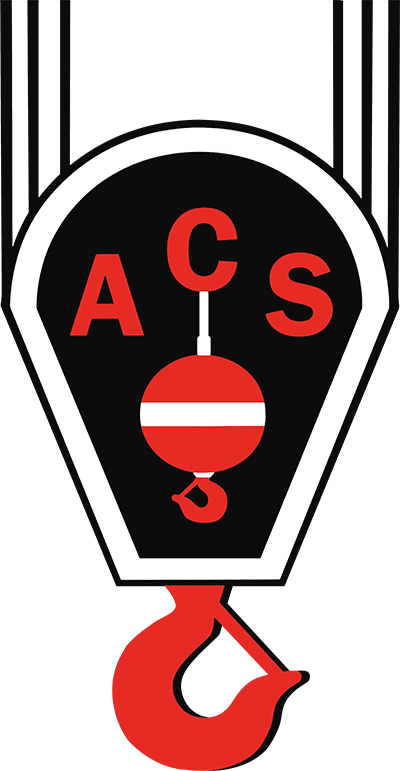
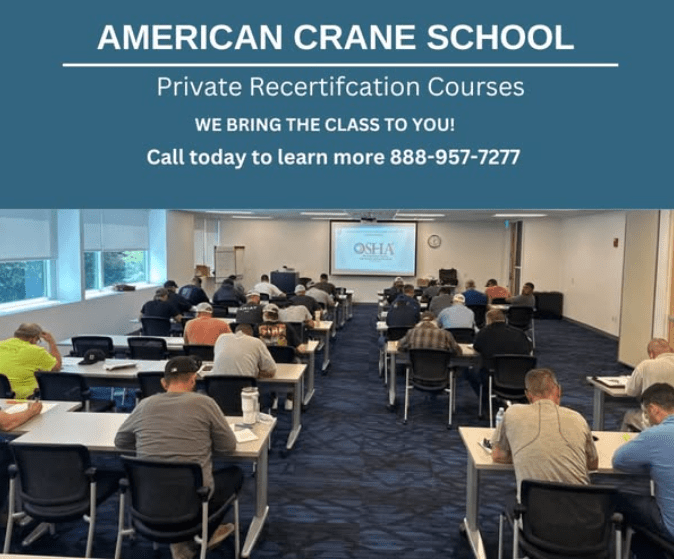
 Industry Pioneer 20+ Years
Industry Pioneer 20+ Years Dedicated Team of Professionals
Dedicated Team of Professionals Classes Monthly & Year-Round
Classes Monthly & Year-Round





